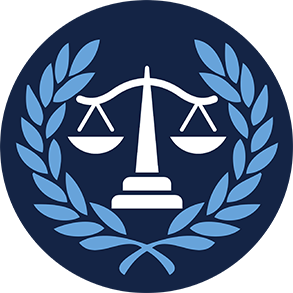Press Releases
Ranking Member Nadler Opening Statement for House Judiciary Committee IP Subcommittee Hearing on Artificial Intelligence and Intellectual Property: Part III – IP Protection for AI-Assisted Inventions and Creative Works
Washington, D.C,
April 10, 2024
Today, Ranking Member Jerrold Nadler (D-NY) delivered the following opening statement for the House Judiciary Committee Courts, Intellectual Property, and the Internet Subcommittee hearing titled, "Artificial Intelligence and Intellectual Property: Part III – IP Protection for AI-Assisted Inventions and Creative Works": "I would like to begin by thanking Chairman Issa and Ranking Member Johnson for holding this bipartisan hearing to examine the scope of intellectual property protection for artificial intelligence-generated and AI-assisted works. Generative AI may be in its nascency, but many models are already capable of creating works that—if created by a human—would be eligible for copyright protection. Inventors, similarly, are using AI to aid in their discoveries. While AI that is capable of creating an invention eligible for patent protection under Section 101 of the Patent Act may—debatably—not exist just yet, the involvement of generative AI in innovative processes still raises the question of how much AI involvement takes away the “human” element of discovery. The question presented at this hearing is narrow at first glance. Simply, “how much human needs to be involved for a creation to warrant intellectual property protection?” When we discuss generative AI, it is often in terms of broader controversies, including ingestion, practical application, and the replication of human works and styles. But discussions like the ones this subcommittee is embarking on today can launch us in entirely unique, unexplored directions. How much AI is too much to render something a human creation, whether some uses of generative AI are more acceptable as tools than others, and how we even could tell a final product was created by a machine rather than a person are all valid questions that ensue from this narrow starting point. While the technology may be new, the philosophical questions presented here today are not. In 1637, Rene Descartes debuted the first principle of his principles of philosophy: “Cogito Ergo Sum,” or “I think, therefore I am.” Over three hundred years later, in 1950, mathematician Alan Turing established what became known as the “Turing Test,” to determine whether or not a computer is capable of thinking like a human being. And the ability of AI to think and create has been examined repeatedly throughout science fiction. Star Trek: The Next Generation even examined the essential question of the rights of a highly advanced AI character called Data, in its season two episode, “Measure of a Man.” While it did not, unfortunately, delve into questions of IP protection for Data’s creative works, it is emblematic of the centuries-long interest in the possibility of artistry, intelligence, and innovation by non-human entities. Many of the philosophical questions presented by AI in science fiction are far enough in the future that they are not concerns before the House Judiciary Committee, but the practical questions of whether and how to extend intellectual property protections to AI-assisted works is very much a question for the here and now. Both the Copyright Office and the Patent and Trademark Office have begun addressing the question through draft guidance, to create basic rules of the road for artists and creators seeking to protect works developed with the use of generative AI. Just over a year ago, the Copyright Office issued the first guidance governing intellectual property claims for works developed with the assistance of AI. The Office informed artists that, in these cases, copyright protection will only be available for the part of a final product created by a human, and it asked that creators identify which parts of each work of authorship were developed using AI. President Biden, in last Fall’s Executive Order on AI, directed the USPTO to develop guidance as well for governing the use of AI in claimed inventions before the Patent Office. Just two months ago, the PTO issued initial “inventorship guidance and examples for AI-assisted inventions.” Like the Copyright Office, the question under the PTO guidelines is not whether or not AI was used in the creation or invention, but how much human innovation and involvement there was in the creation of the invention. I applaud the Copyright and Patent Offices for taking much-needed first steps to clarify what should and should not receive intellectual property protections as generative AI becomes increasingly and indelibly incorporated in our society and how we create. Patents and copyrights are two very different types of intellectual property, and it is important that we acknowledge this reality as we continue conversations about how AI can and should be used in their development. There is no such thing as a one-size-fits-all approach to innovation, and we would be remiss if we fail to recognize this. But many questions remain unexplored in both the patent and copyright realms, and I am looking forward to hearing from our witnesses about what they think is missing from the guidance and from these conversations overall. For example. the guidance at both agencies leaves open the question of how to maintain candor and honesty in applications for IP protection, and I am particularly looking forward to hearing from our witnesses regarding how we can enforce the AI rules we create. AI undeniably will have an enormous impact on our IP systems, and it is imperative that we as the Judiciary Committee consider how best to ensure that our innovation protections remain strong even as technologies change. I look forward to hearing from our witnesses, and I yield back the remainder of my time. |



